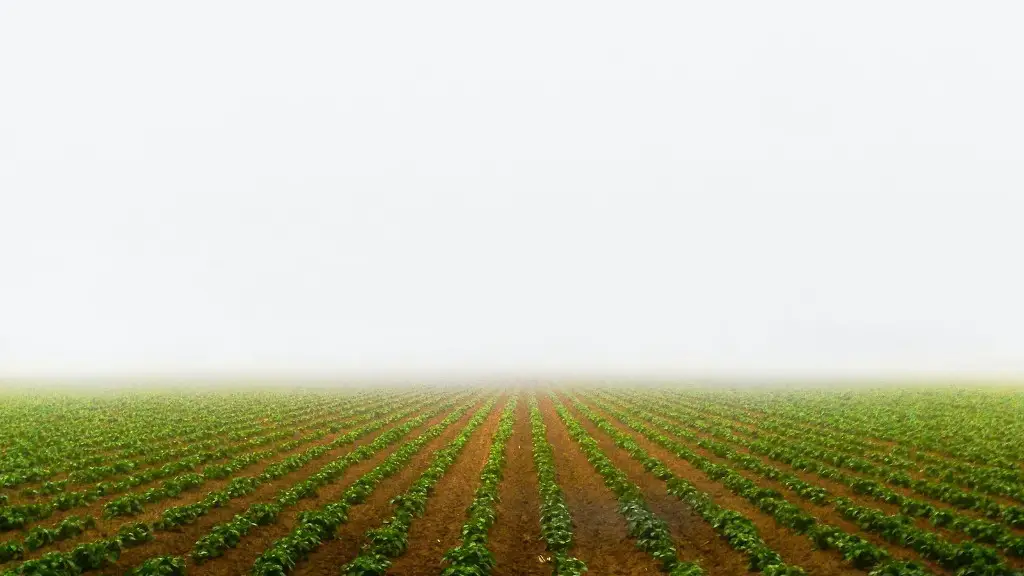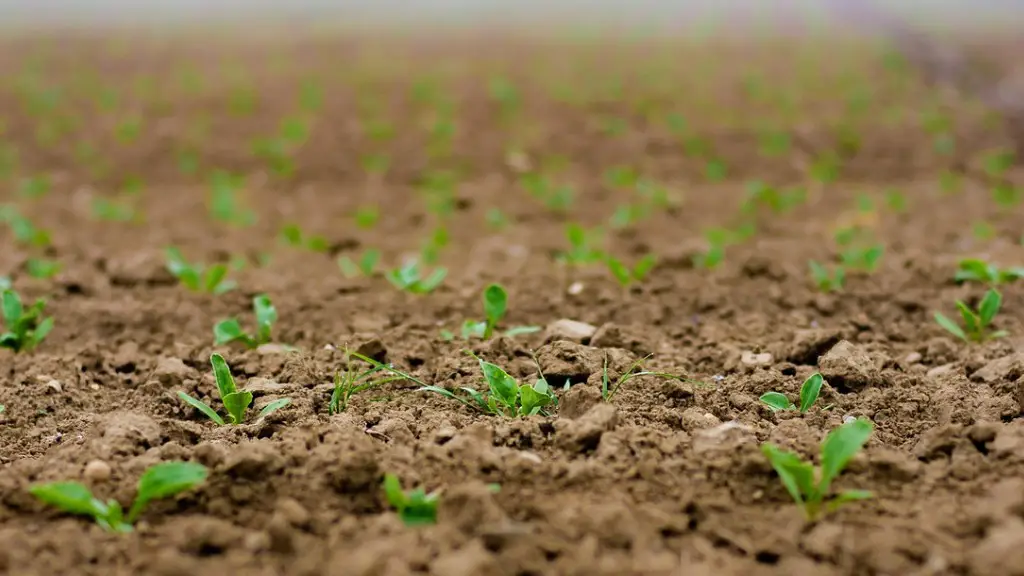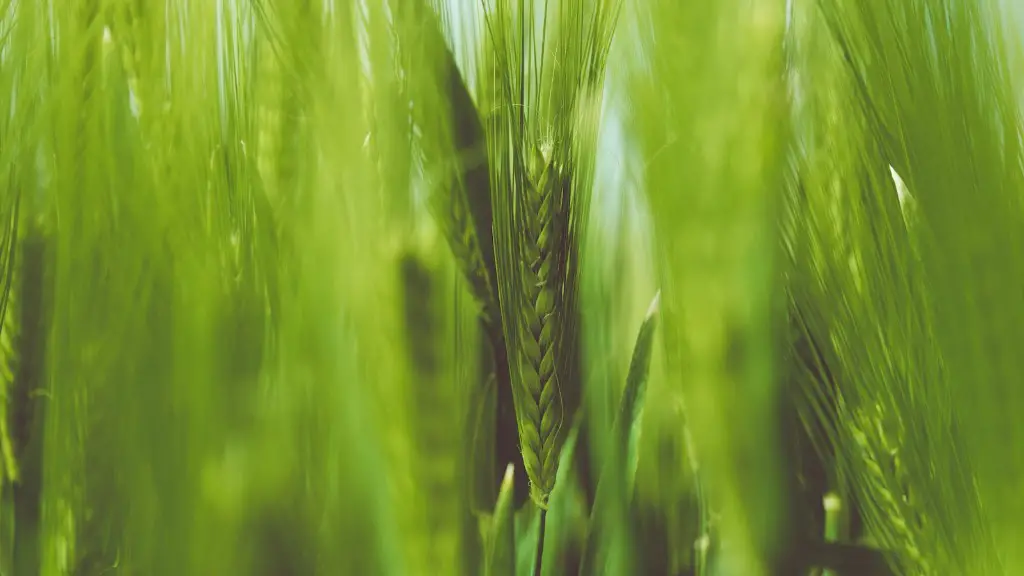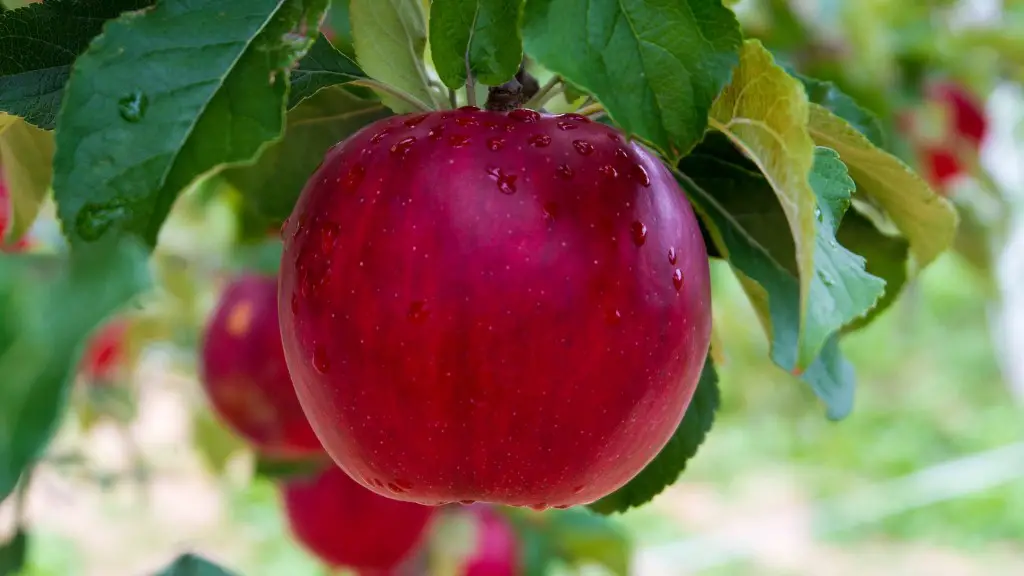High input agriculture is an agricultural system that requires heavy investments of capital, labour and resources necessary to ensure high yields of crops. It is characterised by intensive use of resources in order to maximise yields. Inputs can be either technological or managerial, depending on the type of crops being grown and the local environment. The goal of high input agriculture is to produce commercial crops or other goods for the marketplace, with the intention of making profits for the agriculturalist.
High input agriculture relies on various forms of agricultural technologies and advanced systems to produce high yields. Advances in technology, such as better fertilisers, pesticides and herbicides, automated machinery, and improved irrigation systems, are all important inputs for this type of farming. High input agriculture is also reliant on managerial techniques such as field rotation, crop rotation, and other techniques that allow farmers to produce maximum yields with minimum inputs.
High input agriculture has become increasingly popular in the last century, as increased global demand for agricultural commodities and rising land prices have incentivised farmers to adopt technologically advanced farming practices and systems. This type of farming has allowed farmers to increase yields and lower their costs, thereby increasing profitability. High input agriculture has also encouraged the use of precision agriculture and advanced production techniques to ensure higher yields and reduce waste.
High input agriculture has both advantages and disadvantages. On the one hand, it allows farmers to increase yields, reduce risk, improve returns and control pests. On the other hand, it involves high capital investments and can cause environmental problems due to the use of chemicals, pesticides and other inputs. Additionally, high input agriculture relies heavily on technology and is not usually suitable for regions where traditional farming practices are still being used.
In conclusion, high input agriculture is an agricultural system that requires investments in capital, labour and resources necessary to maximise yields. It relies heavily on various forms of agricultural technologies and managerial techniques to produce high yields, and has become increasingly popular due to incentives offered by global marketplace and rising land prices. Although there are several advantages to this type of farming, it also has potential drawbacks, such as the use of chemicals and the reliance upon technology.
Irrigations Systems
High input agriculture requires a robust irrigation system to ensure high yields. As the demand for food production increases, so too does the need for irrigations systems to support high input agriculture. To ensure optimal growth and productivity, efficient irrigation systems are important. Advanced irrigations systems can increase water efficiency, reduce labour costs, and potential soil erosion and water contamination.
The traditional irrigation system is water-pumping from natural springs and rivers. This is still prevalent for many smallholder farmers in developing countries, but is not the most efficient system for highly intensive agriculture. Modern irrigations systems include drip, sprinkler and pivot irrigation, as well as computerised systems that can monitor plant needs from a remote location.
Another technology that can be used for high input agriculture is hydroponics. Hydroponics is an advanced agricultural technique that eliminates the need for soil, allowing crops to be grown in nutrient-rich water. It is suitable for areas with limited arable land, and can provide high yields with minimal resources.
Furthermore, many high input farms employ more advanced systems, such as GPS and GIS technologies, that allow farmers to monitor their crops and field conditions in real time. These systems help farmers make better informed decisions regarding planting, fertilising and irrigation as well as mitigating pests, weeds and diseases.
In conclusion, efficient irrigation systems are necessary for high input agriculture and modern technologies are essential for optimising yields. Traditional irrigation systems such as water-pumping are still used for farming, but are not the most efficient for high input farming. Irrigations systems such as drip, sprinkler and pivot irrigation, as well as hydroponics, can provide high yields with minimal resources, whilst modern technologies such as GPS and GIS systems are used to improve farming decision making.
Soil Management
High input agriculture requires effective soil management to maximise yields and profitability. Soil management is essential to ensure that the soil remains science and fertile, and that crops are robust and resilient to drought and pest damage. This is achieved through soil conservation, soil testing, fertilisation and crop rotation.
Soil conservation helps keep the soil in good condition, reducing erosion and improving soil structure. Cleaning up land and air, conserving topsoil, waterways and other natural resources can help reduce environmental impacts and maintain sustainable farming practices.
Soil testing is a process used to measure soil fertility levels in order to determine the best fertilisers for optimal growth. The nutrients in the soil should be in balance, with adequate levels of nitrogen, phosphorus and potassium to ensure healthy crops. Different fertilisers will vary in terms of formulation and application rate, so a soil test should be conducted before adding any fertilizer to the soil.
Fertilisers, either inorganic or organic, are used to ensure high crop yields. Inorganic fertilisers, such as urea and triple super phosphate, are cheaper and don’t take up much time to apply. Organic fertilisers have more complex formulations and take more time to apply, but have more profound effects on the soil.
Crop rotation is an important soil management technique used in high input agriculture. This involves growing different crops in different locations each season to prevent soil degradation, reduce risk of pests and disease, and improve crop yields. Crop rotations should include crops that are suitable for the soil and local environment, as well as those which will produce a high yield.
In conclusion, soil management is necessary for high input agriculture to ensure high yields and improve profitability. Soil conservation, soil testing, fertilisation and crop rotation are all important tools for effective soil management. Inorganic and organic fertilisers can be used to ensure adequate nutrient levels in the soil, whilst crop rotation is used to reduce environmental damage, reduce risk of pests and disease, and ensure higher yields.
Pest Control
Pest control is an essential part of successful high input agriculture. Plant pests cause damage to crops, reducing yields and impacting revenues. Pest control can be divided into two categories – chemical and non-chemical control. Chemical control involves the use of pesticides, herbicides and other toxins to kill off the pests. Non-chemical approaches involve the use of crop rotation and other cultural methods to control the pest populations.
Chemical control has been the main method of controlling pest populations for many years, due to its effectiveness and cost efficiency. Chemical insecticides, fungicides and herbicides are widely used in modern agriculture, to protect crops from pest damage. However, chemical pesticides can have a negative effect on the environment, including damage to pollinators and other innocent wildlife. It is therefore important to use these chemicals with caution.
Non-chemical methods of pest control involve crop rotation and other cultural methods. Crop rotation helps to break the life cycle of certain pests, as certain crops are more susceptible to certain pests. Other cultural methods include the use of barrier traps and the manual removal of pests. These methods are often more sustainable than using chemical pesticides, but require greater effort and time.
Other approaches to pest control involve the use of biological control agents, such as natural predators, parasitic wasps and even fungi. These agents hunt down and destroy pest populations, without causing any harm to the crops. Additionally, these agents can be more sustainable than chemical pesticides, as they don’t harm beneficial insects.
In conclusion, pest control is essential for high input agriculture, as pests cause damage and reduce yields. Chemical pesticides are often used for pest control, but can have a negative effect on the environment and other species. Non-chemical methods of pest control include crop rotation and other cultural methods, and the use of biological control agents such as natural predators, parasitic wasps and fungi. These methods are often more sustainable, but require more effort and time compared to chemical pesticides.
Fertiliser Management
Fertiliser management is an important part of successful high input agriculture. Fertilisers are used to improve soil fertility levels and enhance the growth and yield of crops. They should be used carefully and judiciously, as excessive fertiliser use can pollute the environment, damage crops and cause costly losses.
Before applying fertiliser, it is important to know the soil structure and fertility levels. Soil tests can be conducted by a soil scientist or from home with a soil testing kit. This will give an indication of the current nutrient levels in the soil, as well as possible deficiencies.
The application of fertilisers should be guided by soil tests and crop needs. Different fertilisers will vary in terms of formulation, application rate and timing. Inorganic fertilisers, such as urea and triple super phosphate, are quick-release and are often used in combination with other fertilisers. On the other hand, organic fertilisers are slower release and more sustainable, but they may require more time and effort to apply.
It is also important to be aware of excess nutrient runoff and leaching. Runoff occurs when fertilisers are not absorbed by plants and taken out of the system. As a result, the nutrients can be found in nearby water sources, polluting the environment and endangering surrounding ecosystems. Leaching refers to the downward movement of fertilisers through the soil, taking nutrients away from the roots and not providing any benefit.
In conclusion, fertilisers should be used cautiously and judiciously in high input agriculture. Soil tests are necessary to determine the current fertility levels and the relevant formulation,application rate and timing of fertilizers. Inorganic and organic fertilisers can be used, but sustainable practices should be adopted to reduce nutrient runoff and leaching.
Harvesting
High input agriculture relies heavily on optimal harvesting practices to ensure maximum yields. Harvesting is the process of collecting the crops and processing them for storage or sale. Knowing when to harvest is essential, as under-ripened crops can lead to revenue losses, and over-ripened crops can reduce quality and waste resources.
The harvest time is determined by the type of crop and local climate. Different crops have different harvest windows and climate can have an effect on the ripeness of the crop. For example, warm climates are often associated with early-ripening crops. It is therefore important to consider both the plant type and climate when making harvest decisions.
Harvesting tools and techniques also play a key role in successful high input agriculture. Mechanised tools, such as combine harvesters, make the harvesting process more efficient and help to reduce labour costs. Manual harvest techniques, such as hand-picking, can be used for selective harvesting and to collect lower-yielding crops.
Proper post-harvest management is also important to ensure maximum yields. Crops should be cooled and stored appropriately, to ensure they remain edible and maintain their nutritional value. There are different types of storage methods, such as environmental chambers and multi-storey warehouses, which should be chosen based on the type of crop being stored.
In conclusion, harvesting practices are essential for high input agriculture. Knowing when to harvest, and which tools and techniques to use, is important for ensuring optimal yields and revenues. Different harvesting tools and techniques should be employed, depending on the type of crop and local climate. Proper post-harvest management is also important, to ensure that the crops are cooled and stored appropriately, maintaining their nutritional value and edibility.





